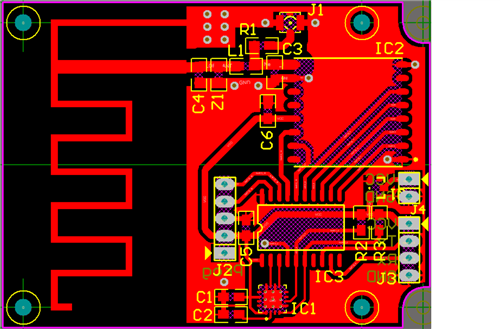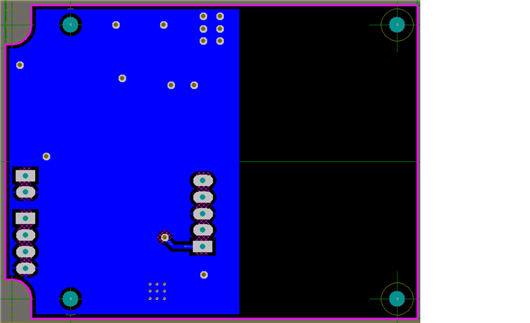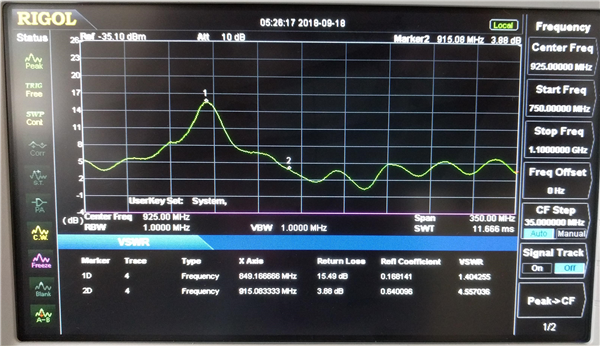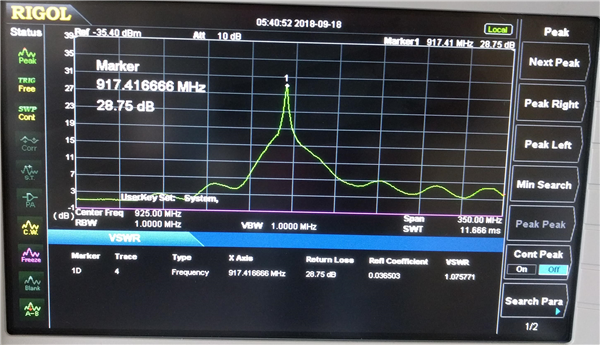Part Number: CC1110EM868-915-RD
Hi,
I've designed my new PCB using the DN023 as a reference for the 915MHz PCB antenna.
The dimensions of the antenna are exactly the same. My ground plane is slightly bigger (35mmx46mm instead of 31x45). The PCB thickness is 0.8 mm as advised.
As "no external matching components are needed", only L1 is populated with a 0 ohm resistor.
J1 is used as an external ufl connector for tests purpose (when R1 is populated with a 0 ohm resistor).
Since the last part of the antenna is here 3mm long, it should be calibrated for 900-915MHz. But my tests show very different results.
When I've tested my design, using 1/4 wave length (82mm) wires as antenna give a way better signal strength than using that PCB antenna.
Here are some measures of the VSWR / return loss of the antenna :
The VSWR is best at 850MHz.
After cutting a few millimeters of the antenna length, the frequency increase, but it doesn't match the Design Note.
To prove that the measures are accurate, I've also tested a reference antenna.
That is a perfect result.
What could be wrong in my implementation of this design?
Do you have any suggestion for it to work?





